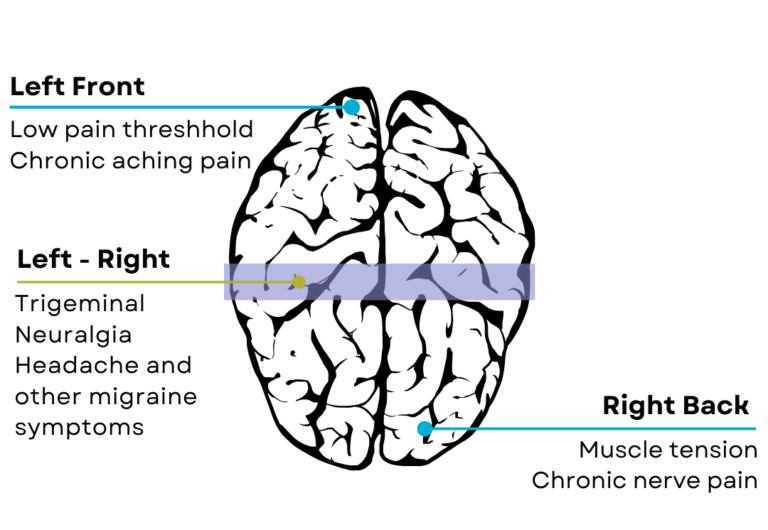Pain-Migraines, Headaches, Fibromyalgia, & More
Neurofeedback has emerged as a promising therapeutic approach for alleviating migraines, headaches, pain syndromes, and fibromyalgia by targeting the underlying neural processes associated with these conditions. Migraines, headaches, and chronic pain syndromes often involve dysregulation in the central nervous system, and neurofeedback aims to address these abnormalities through real-time monitoring and modulation of brain activity.
The correlation between brainwave patterns and pain perception is well-documented. Neurofeedback, often conducted using electroencephalography (EEG), enables individuals to learn self-regulation of specific brainwave frequencies associated with pain. By training the brain to modify patterns such as increased theta or decreased alpha activity, neurofeedback seeks to normalize neural function and reduce pain perception. This approach is distinct from medication, which may offer temporary relief but often fails to address the root causes of chronic pain conditions.
One of the advantages of neurofeedback is its non-invasiveness and absence of potential side effects commonly associated with medications. Neurofeedback empowers individuals to actively participate in their healing process by gaining control over pain-related neural patterns. Research has shown promising results, with individuals undergoing neurofeedback reporting reductions in pain intensity, frequency, and associated symptoms.
For conditions like fibromyalgia, characterized by widespread musculoskeletal pain and tenderness, neurofeedback offers a holistic and targeted intervention. By modulating brainwave patterns associated with pain perception, neurofeedback can contribute to improved pain management and enhanced overall well-being. The personalized nature of neurofeedback training makes it a valuable alternative or complementary therapy, providing individuals with a long-term, sustainable solution for managing chronic pain syndromes.
Treatment Sites With Neurofeedback


Studies
Jensen MP, Gertz KJ, Kupper AE, Braden AL, Howe JD, Hakimian S, Sherlin LH. (2013). Steps toward developing an EEG biofeedback treatment for chronic pain. Appl Psychophysiol Biofeedback. 2013 Jun;38(2):101-8. doi: 10.1007/s10484-013-9214- 9. Chronic pain poses a substantial challenge for individuals with spinal cord injury (SCI), who are often unresponsive to conventional analgesics. Initial investigations propose that electroencephalography (EEG) biofeedback, commonly known as neurofeedback (NF), holds promise in addressing refractory chronic pain associated with SCI. In a study involving 13 individuals with SCI and chronic pain, participants underwent 12 NF sessions, completing four sessions for each of the three different NF protocols randomly assigned. Notably, all three protocols exhibited similar immediate effects on pain intensity.
Following the 12 NF sessions, participants reported reductions in worst pain and pain unpleasantness, sustained at a 3-month follow-up. These positive outcomes were accompanied by participants expressing satisfaction and perceived benefits from the treatment. Furthermore, EEG activity changes aligned with the training protocols were observed in theta (θ) and alpha (α) frequencies, indicating neurophysiological alterations. These preliminary findings suggest the potential efficacy of NF in addressing pain.